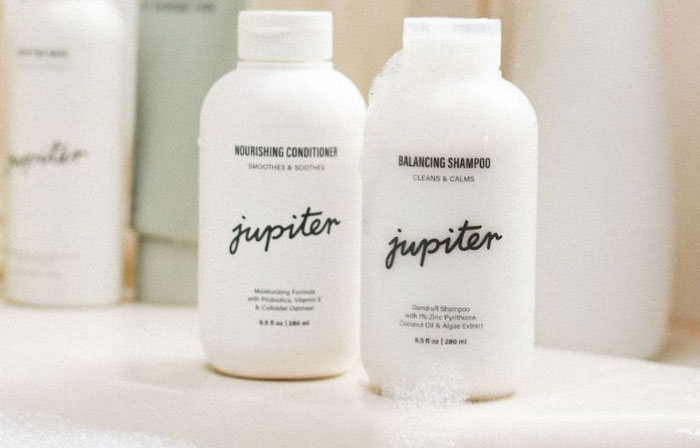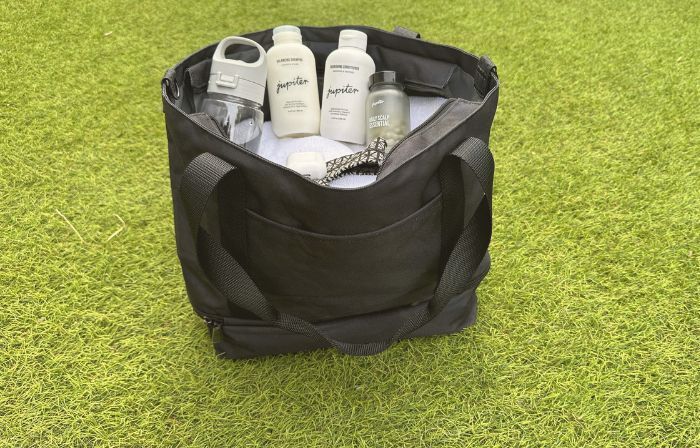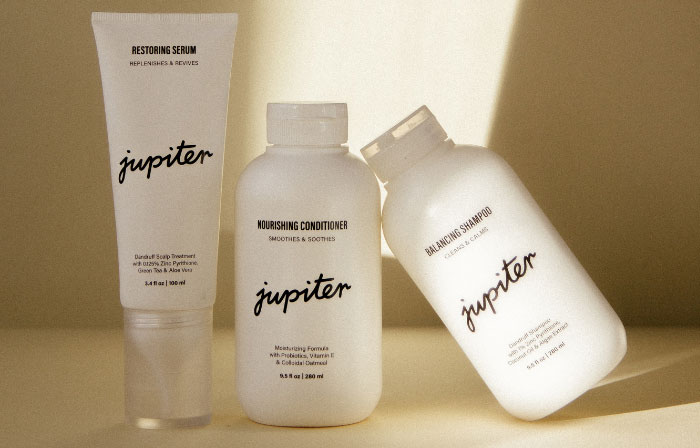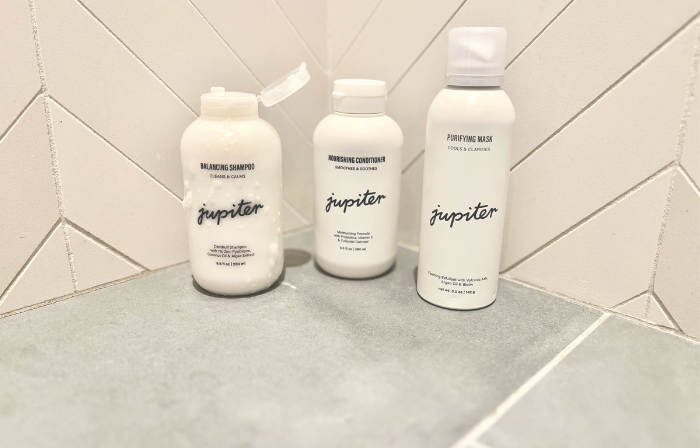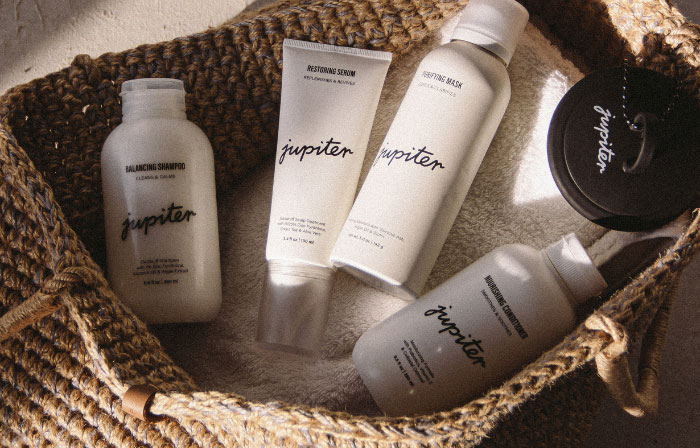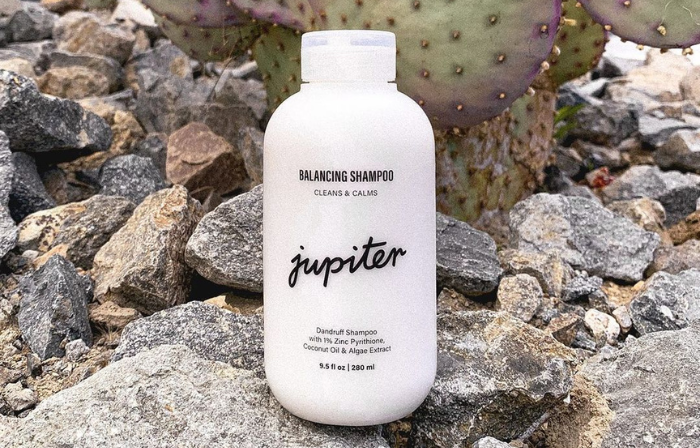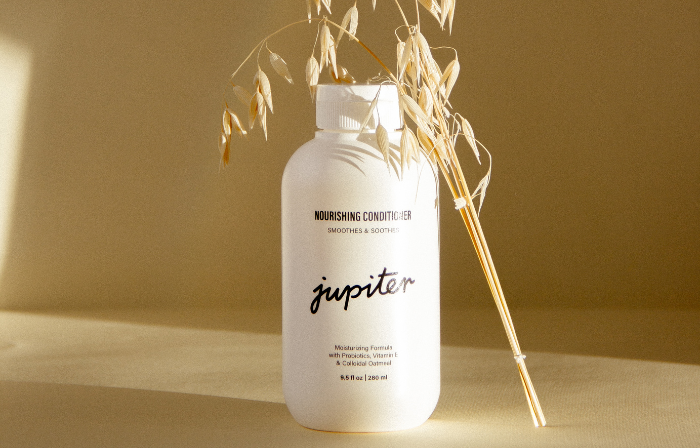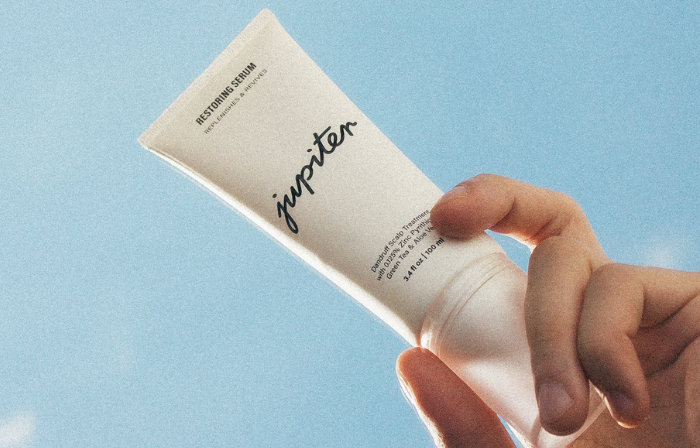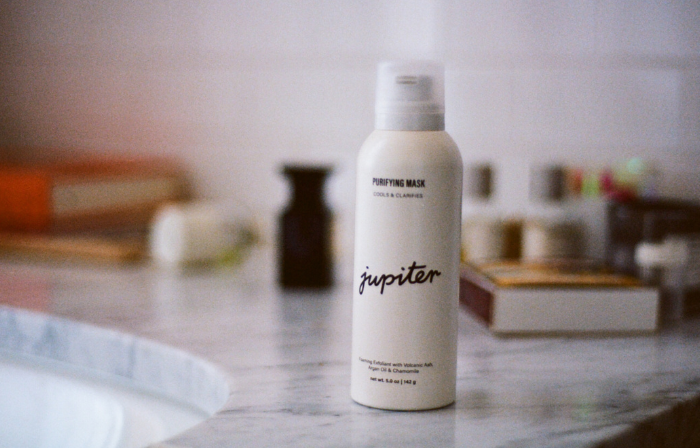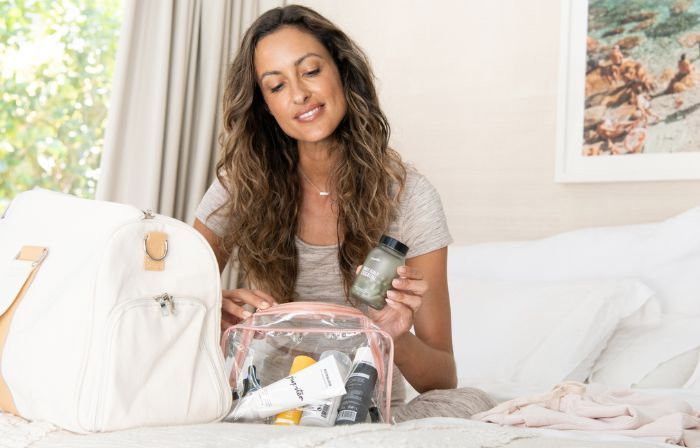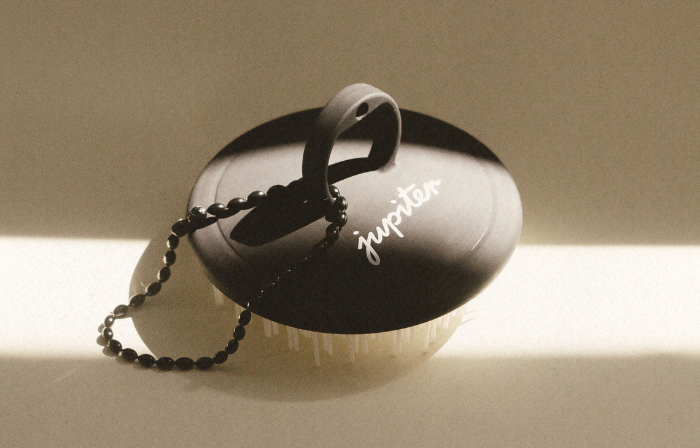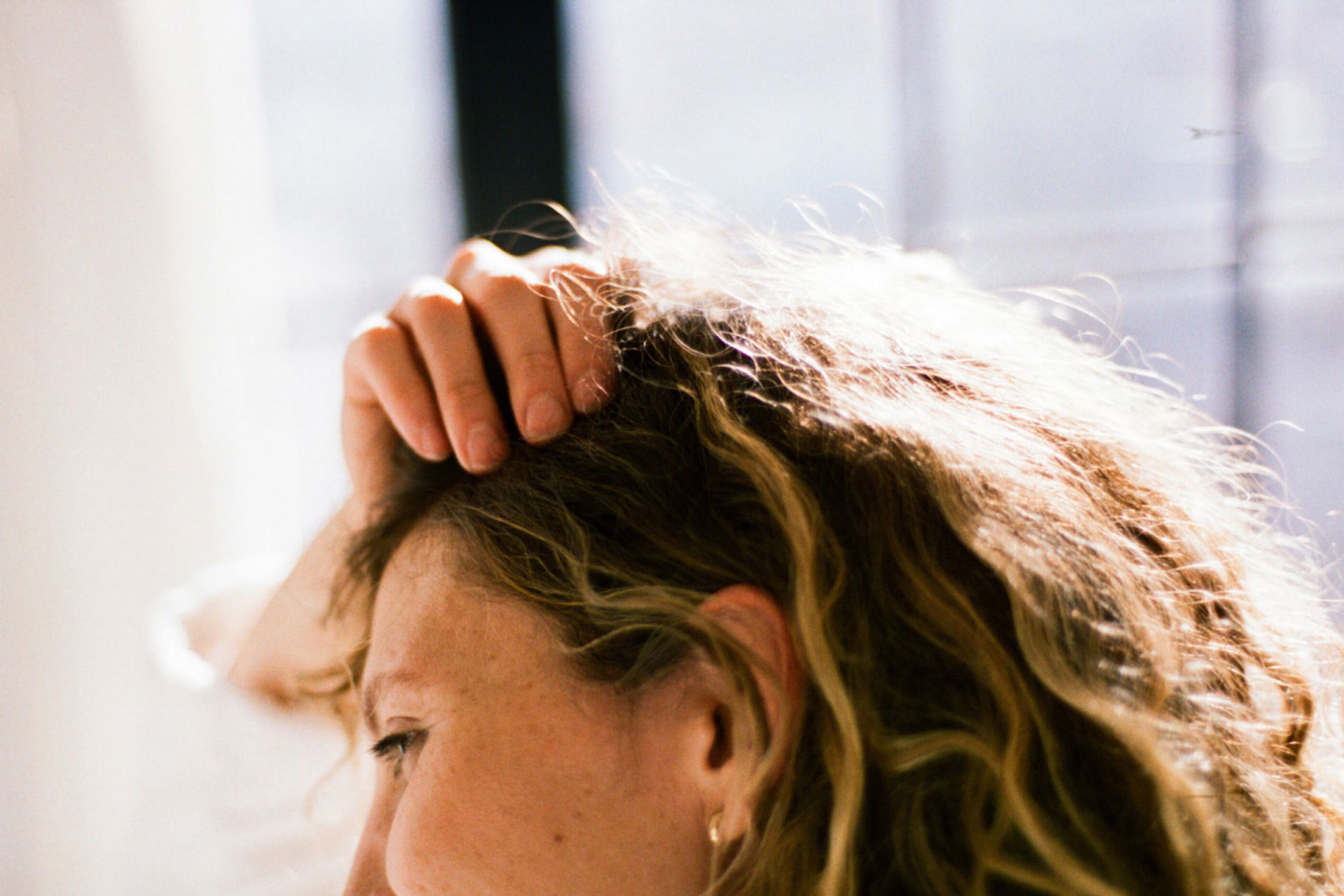Does Malassezia Cause Dandruff? What The Science Says
Malassezia. It may sound exotic, but you’ve already got an intimate relationship with this fungus. It lives on all human skin, and is a natural part of your skin’s microbiome - the ecosystem of tiny organisms that live in and on your body, and are essential to your health.
If you have dandruff, however, Malassezia has seized control of your scalp, contributing to the irritation of your skin - and ultimately to flaking and itching. People with dandruff tend to have too much Malassezia, a sign that their scalp’s microbiome is out of balance.
So does Malassezia actually cause dandruff? What makes it run rampant? And what’s the best way to restore health and comfort to your suffering scalp and its delicate microbiome? Let’s take a deep dive into the science of Malassezia and scalp health - and look at how to regain a more balanced relationship with this fascinating fungus.
Malassezia 101
Malassezia isn’t just one fungus. The name actually refers to a whole genus of fungi, many of which live as commensals on the skin of humans and other animals.
Different species of Malassezia in different numbers may live in your scalp depending on your geography and environment, with varying levels of virulence. Interestingly, one study comparing cases of dandruff in India found that people in the country’s north had more Malassezia restricta, while people in the country’s south had more Malassezia furfur. (Other species, including Malassezia globosa, are also linked to dandruff, psoriasis, pityrosporum folliculitis, Malassezia folliculitis, and seborrhoeic dermatitis in various parts of the world. Some, like Malassezia nana are also lipid-dependent.)
The fungus Malassezia furfur is also known to cause the skin disease seborrheic dermatitis - a fungal infection which can lead to dandruff - and other human skin conditions. (Not-so-fun fungus fact: a close relative to that species, Malassezia pachydermatis, is a common cause of ear infections in dogs and skin conditions in other animals. In fact, it was first identified in a rhino with a bad case of dermatitis.) Other species of Malassezia include Malassezia japonica, Malassezia dermatis, and Malassezia slooffiae.
When it comes to Malassezia and dandruff, one thing is clear. Whatever combination of different Malassezia species your skin microbiome might include, if you have dandruff, you’ve got too much of the fungus on your scalp. Scientific research has consistently shown that people with an itchy scalp and flaky skin have more susceptibility to Malassezia than people with healthy, dandruff-free scalps. Occasionally, a biopsy or microscopy is required to confirm the presence of Malassezia on your scalp, but in general, you won’t need that.
You can learn more about Malassezia on Google Scholar's dermatology articles, like those written by Gaitanis G, Velegraki, Akemi Nishikawa, and Theelen B, in the Journal of Clinical Microbiology (J Clin Microbiol), in Medical Mycology, PubMed, or in the Journal of Dermatology (J Am Acad Dermatol). These go deeper into the role of lipids, pathogens, ketoconazole, enzymes, genomes, lipase, lipophilic yeats, eczema, azole susceptibility, superficial cutaneous infections and treatment through fluconazole and itraconazole.
The Microbiome & Health
Malassezia is just one example of how a balanced microbiome is essential to healthy human bodies.
Often, we think of our bodies as independent of our environment. But the truth is that the communities of microorganisms on our skin, in our digestive tract, and elsewhere in our bodies have significant impacts on our health. They are crucial to digestion, our immune systems, and likely even to our psychological well-being.
Many different factors can affect your microbiome, from your diet to your environment to immunosuppression to antibiotic medications and other medical treatments. Increasingly medical researchers are using probiotics to restore health to the microbiome, as a way to treat health problems and boost wellness.
It’s a fascinating area of research. Fortunately, dermatologists already have a fairly solid understanding of the link between microbiome imbalance and dandruff - and how to restore health to your scalp.
Scientific research has consistently shown that people with an itchy scalp and flaky skin have more Malassezia than people with healthy, dandruff-free scalps.
The Link Between Excess Malassezia & Dandruff
To understand dandruff and Malassezia’s role in it, let’s look at how healthy scalps compare to those with itching and dandruff flaking. Malassezia has many species that cause malassezia infections including m. globosa, m. furfur, m. restricta, m. pachydermatis, m. sympodialis, m. sympodialis, malassezia sympodialis, malassezia spp, and m. ovalis (which is also known as Pityrosporum ovale, the malassezia yeast cells of the genus).
In a healthy scalp with normal skin and no folliculitis, dead skin cells shed constantly as new ones grow. The sloughing off of dead skin cells usually goes unnoticed - the particles are tiny and the process doesn’t cause any visible flakes or irritation. The lifecycle of skin cells on the scalp is usually around a month.
In people with dandruff, though, this process happens much faster and with more destructive results. Some studies have shown that people with dandruff grow and shed skin cells in the scalp in a matter of days or a week.
Malassezia’s Role
An overgrowth of Malassezia is thought to be fueling this rapid skin growth cycle. Malassezia feeds on sebum, the natural moisturizer secreted by your sebaceous glands. These glands are attached to every hair follicle, which is why the hairier parts of your body tend to be more oily. Sebum provides natural moisture to the hair shaft and the skin and helps protect them.
People with dandruff have too much sebum on their scalps. This encourages an overgrowth of Malassezia, which can also cause pityriasis versicolor, atopic dermatitis, and lesions. People can be sensitive to one of the waste products this fungus leaves behind on the skin, oleic acid, which can become even worse when there’s a population explosion of genus Malassezia.
Unhealthy Buildup
Put it all together and you’ve got skin disorders that come with a lot of unhealthy buildup in your scalp - of sebum, Malassezia, and irritating oleic acid.
Researchers think your skin reacts to the irritation by trying to grow more and more new skin cells to help purge the irritants. This is one explanation for why those experiencing dandruff have such accelerated life cycles for the skin cells on their scalps compared to people with healthy scalps.
Unfortunately, your scalp’s desperate efforts to grow and purge irritants don't really work. Instead, you end up with a buildup of excess dead skin cells, along with itchiness and irritation. The pesky white flakes and itching from dandruff are the result.
Rebalancing Your Scalp's Microbiome
Getting rid of dandruff after the identification of Malassezia means giving your scalp a little help to restore its healthy microbiome. There are lots of antifungal agents, antifungal drugs, and ingredients that promote antifungal activity to create a healthy scalp - from salicylic acid to fatty acids to vitamin C to spearmint and rosemary essential oils. These can all play a role in caring for your scalp and hair.
But reams of scientific studies show there’s a crucial active ingredient no dandruff shampoo should be without: Zinc Pyrithione. Zinc Pyrithione is fungistatic - meaning its activation keeps the cells of fungi from dividing, stopping their growth. In other words, it’s your key to taming the Malassezia in your scalp. Reducing Malassezia lets you reduce oleic acid wastes and the irritation they cause, soothing your irritation.
This is why regular use of a dandruff shampoo containing Zinc Pyrithione is the best way to get rid of dandruff for good.
Tame Malassezia With a Spa-Quality Treatment
Most anti-dandruff shampoos smell, feel, and look medicated: they might be chalky, runny, and have a bad fragrance you don’t want following you around. And they don’t necessarily provide the best care for your scalp and hair.
Even if these mainstream topical dandruff treatments use Zinc Pyrithione for effectiveness, they tend to contain unsafe ingredients like parabens and phthalates, and are often so unappealing that people don’t want to use them regularly. Without regular use and compliance, these drugstore brands won't even work. Other treatment products that target the scalp focus more on lovely-sounding natural ingredients - and just don’t work without the powerful active ingredients.
This is why we created Jupiter. Jupiter is the first elevated dandruff and scalp care brand that takes a truly complete approach to your hair and scalp. Our dandruff care products treat flakes and itching, while our scalp care products nourish your locks and scalp.
Jupiter products take advantage of all that nature has to offer for great scalp and hair health, including ingredients like moisturizing coconut oil, fragrant lavender, and more. Jupiter’s dandruff products for the treatment of Malassezia nix flakes the proven, science-based way, with Zinc Pyrithione. And our products never contain artificial fragrances, dyes, sulfates, phthalates or parabens. Learn more about what sets us apart.
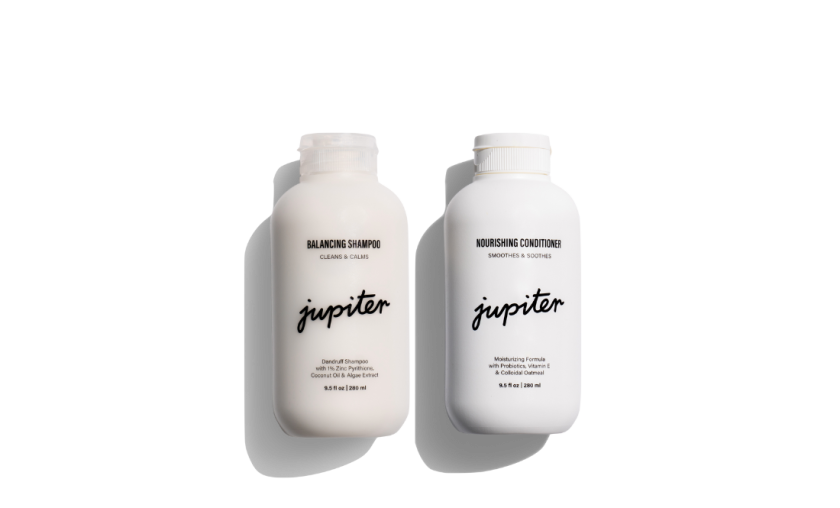
The shower powerhouse. The dream team. The dynamic duo. Call it what you will. If you have light-to-moderate flaking, redness or irritation, this tends to your dandruff while the moisturizing conditioner leaves your hair looking shiny and healthy.
